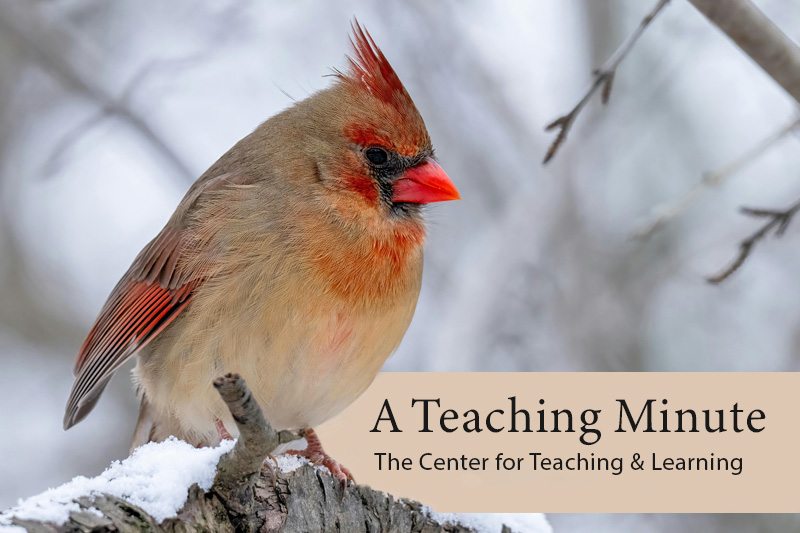

From the CTL, “A Teaching Minute” brings
teaching tips to your inbox.
Friday, 3/21/2025
One winter day at the Center for Teaching and Learning (CTL), we viewed an Instagram post from the UVM Disabled Student Union (DSU) about making courses accessible. We loved what we saw and thought, “We need to reach out!” After a great chat with some awesome DSU members we were so excited by their fresh perspectives and practical tips they shared for us as instructors. It was clear that their advice was too good not to share with the whole UVM community. We asked if they'd be up for contributing their thoughts to this Teaching Minute, and they agreed. We’re excited about our very first collaboration between CTL and DSU, and we're so pleased to share their fantastic tips with all of you.
DSU: Accessibility is an umbrella term that considers the needs of a variety of people - both with and without disabilities. Accessible can mean different things, depending on someone’s needs, and you can’t always tell by looking out at your class what kinds of needs are present. Some students may transmit an access letter, but not every student with accommodations chooses to communicate with them, and not every student with a disability may be registered for accommodation. Invisible disabilities are extremely common, and many of the struggles go completely unnoticed to the naked eye. For example, a student with chronic pain may not talk about it or be visibly in pain - but that doesn’t mean that attending class on high pain days isn’t significantly more difficult for them than their peers, and it also doesn’t mean that they don’t need you, as their instructor, to consider their needs. Simply uploading lecture slides to Brightspace may minimize that student’s disability-related barriers to succeeding in your class - the same student who you probably didn’t even know you would be helping!
There are many barriers in place for students with disabilities: just getting formal accommodations to begin with isn’t easy. Instructors play a huge role in providing a larger culture of accessibility through their course structure and teaching habits (ex: grading, attendance policies, etc). It makes a huge difference!
CTL: These tips are just the start of creating more accessible and inclusive classrooms. The goal? Making sure every student feels supported and can succeed, and that every instructor knows how to build accessibility into the deep structures of their teaching. In future CTL workshops, we hope to explore these themes even further, sharing practical, teacher-led strategies you can use in your own classroom!
To help guide this effort, we’ve created a short feedback form called "Creating Accessible Classrooms: Your Questions & Experiences". We’d love to hear about strategies you’ve found helpful and any topics or questions you’d like us to explore in future workshops.
A huge thank you again to the students at DSU for their valuable voices and contributions! Follow them on Instagram (@uvm.dsu) and contact them at dsu@uvm.edu for more info about their activities.
If you have specific questions about accommodations for a student, feel free to contact Student Accessibility Services (SAS) for support.
Stay tuned, stay inspired, and build accessibility,
CTL & DSU
Center for Teaching & Learning
www.uvm.edu/ctl
ctl@uvm.edu